Being a hairstylist requires that you dedicate hours each day to making people pretty with their hair.
And yes, many of us love our job as hairstylists.
But behind that smile that comes after getting an ‘I love my hair’ text from a customer lays a lurking danger:
Hairstylist Shoulder Pain
Spending hours to style hair for others involve actions that are causes of pain in the shoulder, neck, and back.
We’ll see those specific causes of pain first.
It’s important to know where exactly the problem is coming from if you have been experiencing body pain as a hairdresser.
Then, we’ll see how you can control such pain while you enjoy your job as a hairstylist.
As someone who has been there, I can assure you that you will find this post relatable and practical!
In this article, I am sharing what has helped me and well-researched tips from experts.
Let’s get started!
Causes Of Hairstylist Shoulder Pain
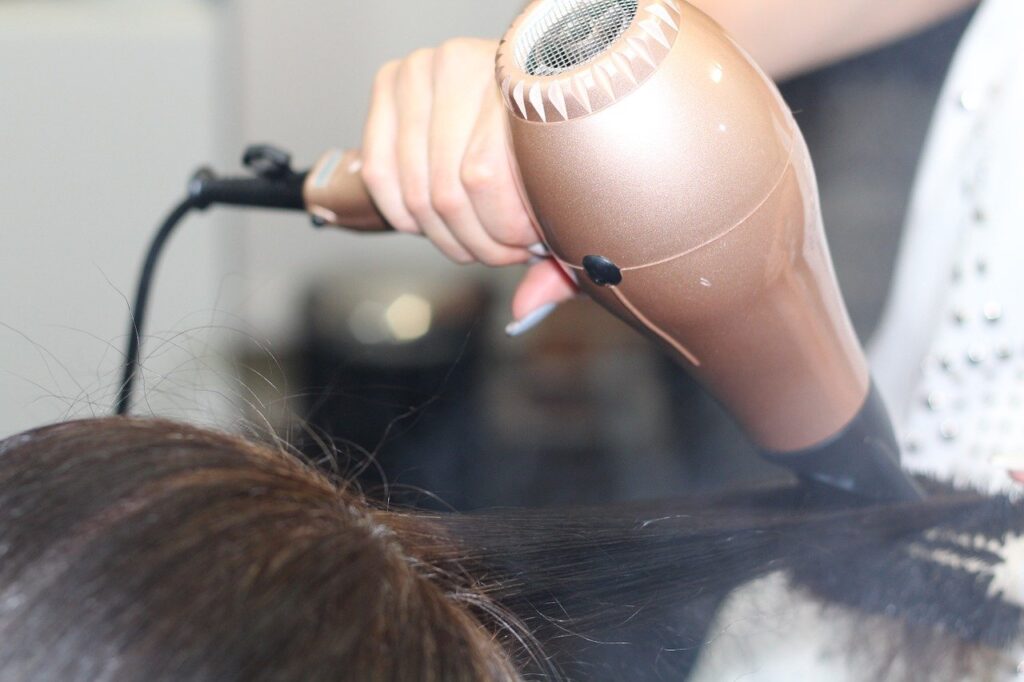
1. Use Of Tools
Hand dryers, hair straighteners, scissors, hair tongs—these are all frequent terms in a hairdresser’s register.
And what is similar to them all?
They exert considerable weight on the shoulders and require holding for a long time in most cases.
And there you have it—the first likely cause of shoulder pain as a hairstylist.
2. Repeated Arm Movements
Hairstyling involves carrying out repetitive movements with your arms hanging in the hair.
Do you make braids or Ghana weaving often? You will surely know what repeated arm movements mean.
With braids, you will perform the same action with your arms about 80 times or more, depending on the type of braids.
This intricate, detailed, repetitive movement tells on the body and causes what we call: “The hairdressing repetitive strain injury.”
3. Long Period Standing
If you work full-time as a hairdresser, then it is your daily wish that you get customers, lots of them.
When clients don’t storm into your salon, it becomes a reason for concern.
Yet, getting lots of customers in a day means that you get to stand for a long time if not throughout the day.
Going from one style to another, one client chair to another, and one hair tool to another is not just mentally tasking, but very physically tasking.
4. The Necessity Of Bad Posture
We all know at least a little about good standing and sitting posture.
But how many times do we ever think about that when making hair for others?
For most hair stylists (I’m shaking my table right now), the best posture at the time becomes whatever is comfortable to achieve the proposed hairstyle.
Awkwardly bent backs, wrongly positioned legs, and crouched shoulders—these might subconsciously become your posture as a hairdresser.
There’s only one destination on that road: neck, back, even knee and shoulder pain.
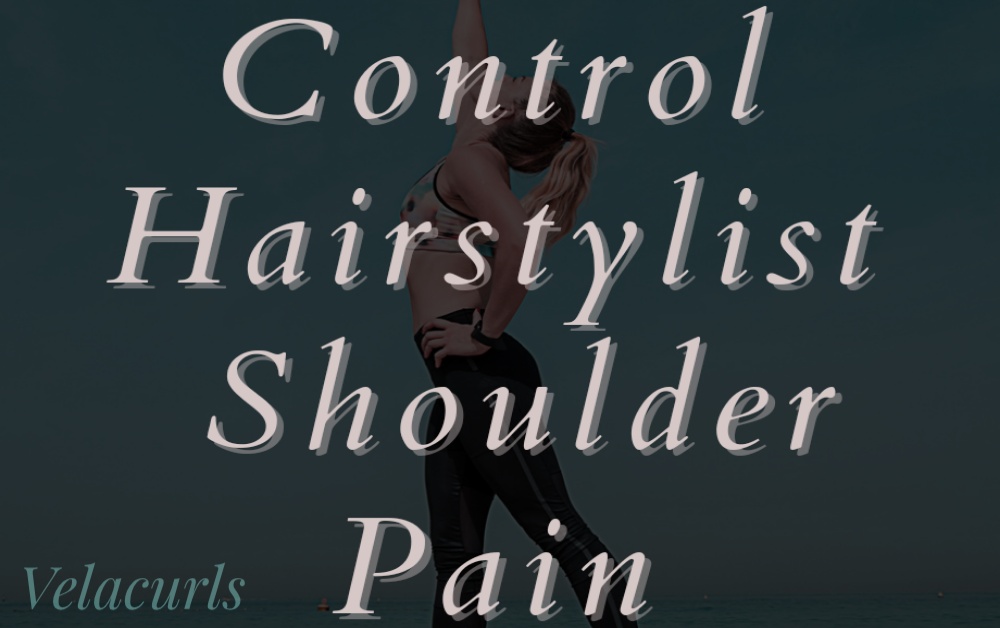
How to Control Hairstylist Shoulder Pain
Now that we’ve identified probable causes, here is how you can prevent and control hairstylist shoulder pain as well as other common hairstylist body problems:
1. Punctuality
Are you wondering what this has to do with the issue at hand?
I’ll explain.
When you start a potentially stressful job with tense muscles, you increase your chances of experiencing body pain when you’re done.
So if you’re the type that gets to your salon when customers are already waiting, and you have to start to work the moment you arrive, you are preparing yourself for an evening with body pain.
On the other hand, when you get to work early enough, you give yourself a few minutes to relax before starting the day’s work.
When you are relaxed, your muscles will, and you will increase your chances of feeling healthy after work.
If you offer home services, arrange to get to your client’s place a few minutes before the scheduled time so that you can relax first.
2. Exercise
There are a few simple exercises that are especially effective for hairdressers.
Getting to work early will give you enough time to do these before you start work every day.
Below are five simple exercises from Sundial clinics that can help you successfully battle hairstylist body problems.
Stretches for Hairdressers
Exercise 1:
- Sit in a good posture
- Gradually bend your chin towards your chest as low as you can
- Then raise your head upwards as though you were looking at the sky as much as you can.
Exercise 2:
- Sit right
- Turn your head to the left as much as you can
- Turn your head to the right as much as you can.
Exercise 3:
- Sit or stand right
- Make shoulder circles by raising your shoulders to the back, up, front, and then down
- Repeat this a few more times.
Exercise 4:
- Stand with good posture
- Stretch one arm forward such that you reach across your chest
- Use the other arm to help the first arm stretch further.
Exercise 5:
- Stand beside the wall about an arm’s length away
- Extend your hand to touch the wall from where you are standing
- Keeping your elbow straight, move away from the wall, dragging your arm behind it.
3. Good Working Posture
Want to control hairstylist shoulder pain? Good working posture is essential.
When styling hair for a client, let them sit such that their head is on the same level as your heart.
This move ensures that your hands do not work on a level higher than your heart, as this would make your heart pump harder, causing shoulder pain.
As you work, avoid leaning on only one foot.
The right standing posture while styling hair is to put one foot in front of the other.
Then you occasionally alternate which foot is in front.
It is also crucial to regulate your breathing while working.
This action also helps your muscles to stay relaxed and prevent likely muscle spasms.
Also, ensure that your wrists are kept straight.
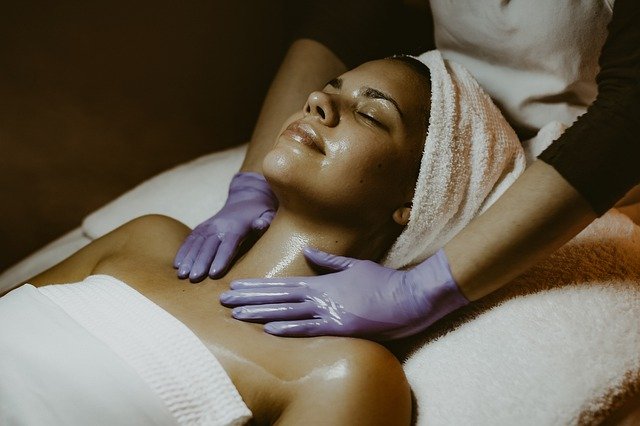
4. Breaks
Tactfully give yourself short breaks.
I know it doesn’t make any sense that you ask a client to wait in the name of ‘I need a break.’
That’s why I said: Tactfully!
Before you pick comb to part the next section, before you select the next bundle of attachment, do things like dropping your hands to your sides and shaking them loose.
Before moving to the next client, do the simple stretches for hairdressers discussed above.
And make it a habit to get massages occasionally.
This will leave your shoulders relaxed.
Speaking of habits, here are some things you should avoid.
5. Habits
Habits such as smoking and uncontrolled drinking should be a no-no for you as a hairstylist.
And this isn’t just about the impression it might give on customers. It’s more about its possibility of causing body pains.
A research study shows that people who smoke are more likely to experience aches and other pains than people who do not.
Read more here.
Consumption of alcoholic beverages, when in excess, can also cause muscle aches and pain as experienced during hangovers.
So even if you do drink, do so in moderation.
This will reduce your likelihood of experiencing shoulder pain after work.
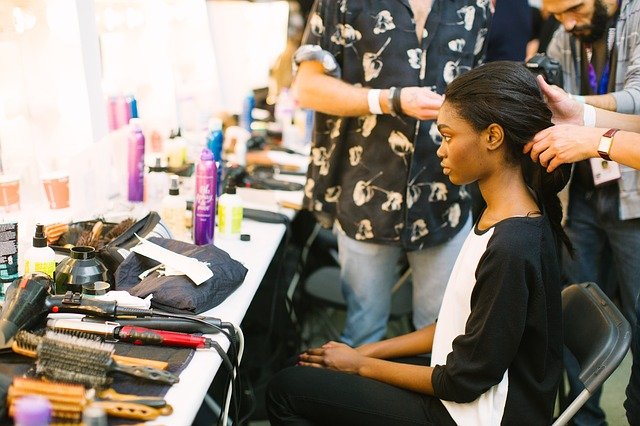
6. Invest In Tools
There are ergonomic tools that you should invest in to make your work as a hairdresser easier.
These include saddle tools and trolleys.
They will help your workspace look fabulous and easy to work smoothly.
Check them out here.
Speaking of ergonomics, it is essential not just for hairstylists but almost every other profession.
For fashion designers, here are sewing ergonomics that will make your work a delight!
Simple things such as rubber mats, good shoes, or a working stool also go a long way in preventing hairstylist shoulder pain.
Rubber mats prevent you from having to stand for long on a hard surface, reducing pressure on your feet and back.
And I’m sure I don’t have to go on and on about the importance of good shoes.
Since one has to stand for long, comfortable shoes are a necessity.
For example, anything higher than a 2-inch heel is not advisable.
7. Watch Diet
Watching what you eat is almost as important as exercises in preventing body pain as a hairstylist. Especially if what you eat has a direct impact on how much you weigh.
Extra pounds would make it harder for you to stand on your feet all day without any after-effects.
You should also include food with anti-inflammatory properties in your diet.
This will work internally to prevent swelling and boost your energy while you work.
How to Prevent Repetitive Strain Injury Hairdressing
Actions requiring repeated arm movements such as picking of attachments, braiding (especially with long hair extensions), and cutting with scissors for long, can cause strain on parts of the body.
I have personally noticed that when I pick large volumes of attachments at a stretch and make long, tiny braids, my fingers cramp and feel numb.
Some hairstylists also experience sore wrists.
Here are suggestions to help prevent repetitive strain injury:
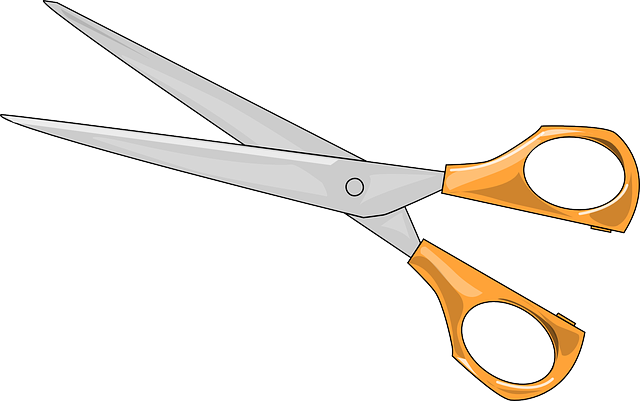
1. Use Right Scissors
As a hairstylist, the pair of scissors you use should be sharp, comfortable, and not heavy.
Sharp because blunt scissors would require extra effort to work as desired, this can cause strain on the wrists.
If you’ve noticed that your scissors get blunt too often and you’re getting frustrated buying new ones, then you have been missing these tips on how to keep your scissors sharp.
Using the right scissors to cut hair and attachments is one way to prevent repetitive strain injury.
2. Position Your Body Right
3. Take Breaks Regularly
4. Try Out Finger Dexterity Exercises
Chemical Accidents Hairdressing
Caring for hair involves contact with potentially harmful chemicals such as relaxers, hair dyes, and bleaches.
Here are precautions to prevent these potentially harmful chemicals from becoming harmful:
1. Ventilation
Ensure that your salon is well ventilated—large open windows and doors.
That way, when you are ‘generous’ with your hair spray on your client’s hair, you do not choke them or even yourself.
And before you hit the spray bottle, confirm that it is directed to your client’s hair and not to your face.
I made that mistake a few times, and no, the results were not the best.
If it is within your means, use an electric air cleaner to clear the air afterward.
2. Wear Protection
Hair chemicals can be so drying on the skin.
To prevent stories that touch, protect your hands when handling them.
Specifically, you should wear hand gloves before using hair relaxers or dyes.
And no, do not give yourself the excuse of ‘my hands are used to them, it won’t do anything.’
You never know when the effects might start to show.
Also, if you notice that the smell affects you, protect your nose when using hair chemicals.
If applicable, use one hand to cover your nose while you handle the chemical with the other.
Otherwise, wear a mask.
3. Separate Tools
Ensure that your tools—cup, spatula, brush, and the likes—have their designated use.
Do not use one for dyeing today and relaxer tomorrow.
Also, avoid the bad habit of improvising your work tools like a spoon or cup for eating.
Yes, I’ve seen it done.
This is dangerous because these chemicals can be harmful when they come in contact with your food.
So, clearly label the chemicals you use in your salon, and let this be clear to others who work with you.
In Short…
Making others prettier doesn’t always have to be detrimental to your health.
Have you been working as a hairstylist without practicing any of the above tips? Then, your health has been paying a heavy price.
But, it’s not too late, start today!
Then, because you’ve taken caution, you can enjoy making beauty your culture without fearing for your health.
Keep in mind, though, that these are preventive measures.
If you are experiencing severe pain and ache from working as a hairstylist, you should see a chiropractor or a physiotherapist.
Do you know other hairdressers who might find this helpful?
Do well to share with them!